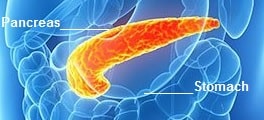Neuroendocrine Tumors
Neuroendocrine Tumors
These types of tumors arises is specialized cells known as neuroendocrine cells. They are infrequent type of tumors and can occur anywhere in the body. Most common locations are lungs, appendix, small intestine, rectum and pancreas. Some neuroendocrine tumors produce excess hormones known as functional neuroendocrine tumors. However, some neuroendocrine tumors don’t release hormones or don’t release enough to cause symptoms are known as nonfunctional neuroendocrine tumors.
Symptoms
These tumors presents as :
- Mild to moderate pain
- Feeling of lump under skin
- Unintentional weight loss
- Flushing of skin
- Diarrhea
- Increase thirst
- Increase urination
- Skin rash
Causes
Exact cause of these type of tumor is unknown. Mutation is the DNA of neuroendocrine cells result in the formation of tumor by abnormally division of cells. These tumors can spread and invade nearby tissues.
Diagnosis
Diagnosis depends upon detailed medical history and complete general physical examination of the patient. Other tests include:
- Imaging tests like CT scan, X-ray, positron emission tomography (PET).
- Biopsy of the tissues from different locations. Sample is collected through bronchoscopy, endoscopy, colonoscopy.
Treatment
Treatment options are as follows:
- Surgical removal of tumor
- Chemotherapy
- Targeted drug therapy
- Peptide receptor radionuclide therapy (PRRT)
- Medications to control excess hormone production in case of functional neuroendocrine tumor
- Radiation therapy
